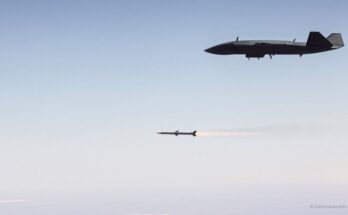The Congressional Budget Office is required by law to project the 10-year costs of nuclear forces every two years, and a new report was just released.
If carried out, the plans for nuclear forces delineated in the Department of Defense’s and Department of Energy’s fiscal year 2019 budget requests would cost a total of $494 billion over the 2019–2028 period, for an average of just under $50 billion a year, the CBO estimates.
The current 10-year total is 23 percent higher than the CBO’s 2017 estimate of the 10-year cost of nuclear forces, $400 billion over the 2017–2026 period.
About $51 billion (or 55 percent) of the $94 billion increase in that total arises from the fact that the 10-year period covered by the current estimate begins and ends two years later than the period covered by the 2017 estimate. Thus, the period now includes two later (and more expensive) years of development in nuclear modernization programs, including the Long-Range Standoff Weapon, the B-21 bomber, and an engine upgrade for the B-52.
Also, costs in those two later years reflect 10 years of economywide inflation relative to the two years that drop out of the previous 10-year projection; that factor (in the absence of any changes to programs) accounts for about one-fourth of the $51 billion increase.
About $37 billion (or 39 percent) of the $94 billion increase is projected to occur from 2019 to 2026—the eight years included in both this estimate and the 2017 estimate. That increase stems mainly from new modernization programs and weapons and more concrete plans for nuclear command-and-control systems.
CBO_Nuclear_Forces_2019Download here
Shaun's deep-rooted interest in military equipment continues in his role as a senior defense analyst with a focus on the United States. He played an integral role in the development of Forecast International's U.S. Defense Budget Forecast, an interactive online product that tracks Pentagon acquisition programs throughout the congressional budget process. As editor of International Military Markets – North America, Shaun has cultivated a deep understanding of the vast defense markets in the United States and Canada. He is a regular contributor to Forecast International's Defense & Security Monitor blog and has co-authored white papers on global defense spending and various military programs.



